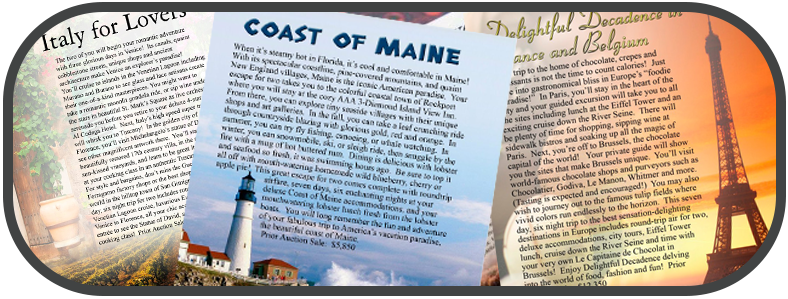Resizing and stretching photos to fit a predetermined size.
Many times I get a client that hands me a 4×6 photo and wants me to turn it (somehow) into a 8.5×11 sheet of paper. But they don’t just want it on the bottom, then want it as a background to put words on top. Well even if you resize it normally to 8.5×5.667 you are still missing in height over 5 inches. This is where you have to be creative. I have seen people stretch a photo and warp the image so bad there is no way to tell what the orginial photo is. Most of the time these needs arise is for backgrounds of advertising that is a large photo with text around it. I would must prefer just increase the image to 16.5×11 and crop it to 8.5×11 using only half of the image, but sometimes the elements are required. Sometimes the client wants what they want even if it does not make sense. So in those situations you have to protect the client from themselves and keep them from warping the photo. You have to ensure the finished product still looks like a real photo.
There is a lot to think about when it comes to resizing and stretching photos in such a way that it still looks like a real photo. The best way it to use sky. Most images are just not tall enough. This is good for you. If the image is not wide enough for your project, it takes a lot more work to get it corrected. So if you can resize the image to fit the width and just work on stretching the height.
To resize use CTRL T when selecting any active layers that are being resized together. Then hold down the SHIFT key while moving the anchors on the corners of the image to adjust to your desired size. Then press enter and you are done.
Now to stretch is another thing. Most times you only want to stretch the sky or parts of an image and not the entire thing. Using the marquee tool highlight the amount of the image you want to stretch. Be careful not to include trees or building but get as much sky as you can. (More is better in this case) Then do a quick CTRL C to copy and CTRL V to paste as a new layer. This is important because the new layer is in the same position as the images so it matches.
If you are only increasing the size of the image height by 40% or less then stretch it. Press CTRL T and this time grab the middle anchor on the top and pull up. Do not press the SHIFT key at all. This will stretch the sky and you can watch it as you move. Be sure that you are not warping it and it still look realistic. If you got more than 40% growth then it will look fake. At that point you have to make a reverse image and stretching the reverse to make it work.
To do that you use the marquee tool and highlight the amount of the image you want to stretch. Again be careful not to get any trees or building because we are going to flip this. Then do a CTRL C and now file open a new document. Once the new document is open do a CTRL V to paste in the new document. You then want to select Image and Image rotation and Flip Canvas Vertically. This will have reversed the image and make the top of the image a mirror of the bottom of the new one. Now CTRL A to highlight the entire new image and CTRL C to copy it. Close the new image and go back to the project file. Press CTRL V to paste the new reverse image in place. Now using the move tool place it right above the project image. We are not keeping it in place over the old image like the last example. Now use CTRL T and grab the anchor on the middle top and stretch it up. It should cover more than 40% now because you are using the reverse of the image. If you still need to go more repeat the steps and add reverse and reverse images till you get to the desired height.
Now comes the hard part. You have to commit to your changes. You highlight each of the layers and right click them and press merge. Now it is one image. If you need to fix any lines because of spacing, go back and fix the spacing. If you got a tree in it and can’t remove it use the spot healing tool and cover the entire tree and the program will remove it.
If you have to increase the width because there is no other way then use the reverse technique above for horizontally. Then on purpose overlap the layers a bit (at least 50 pixels) and use the eraser tool with a heavy feather and soften the blends and make it look real. Usually this is applied to water or tree lines. Now don’t do 15 repeating layers instead stretch it to no more than 40% every other one and use the eraser tool to create a fake blend. Flatten the layers and use the spot heal tool to get rid of any artifacting. Now that you have the width correct you go back to step one and adjust the height to your desired need.
I wrote this because I had a client that needed to do this so often that he asked for detailed instructions so he would be able to stop calling me to help with it. I understand this is not for everyone and it is not designed to be. But it is a way to pratice and find solutions for uncommon problems that you make be asked to solve.




Leave a Reply
Want to join the discussion?Feel free to contribute!